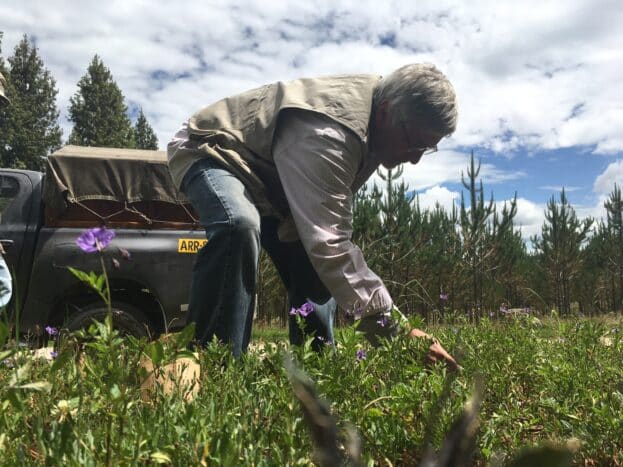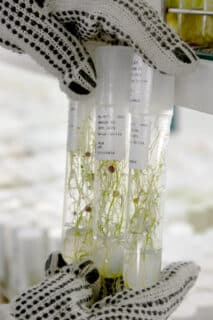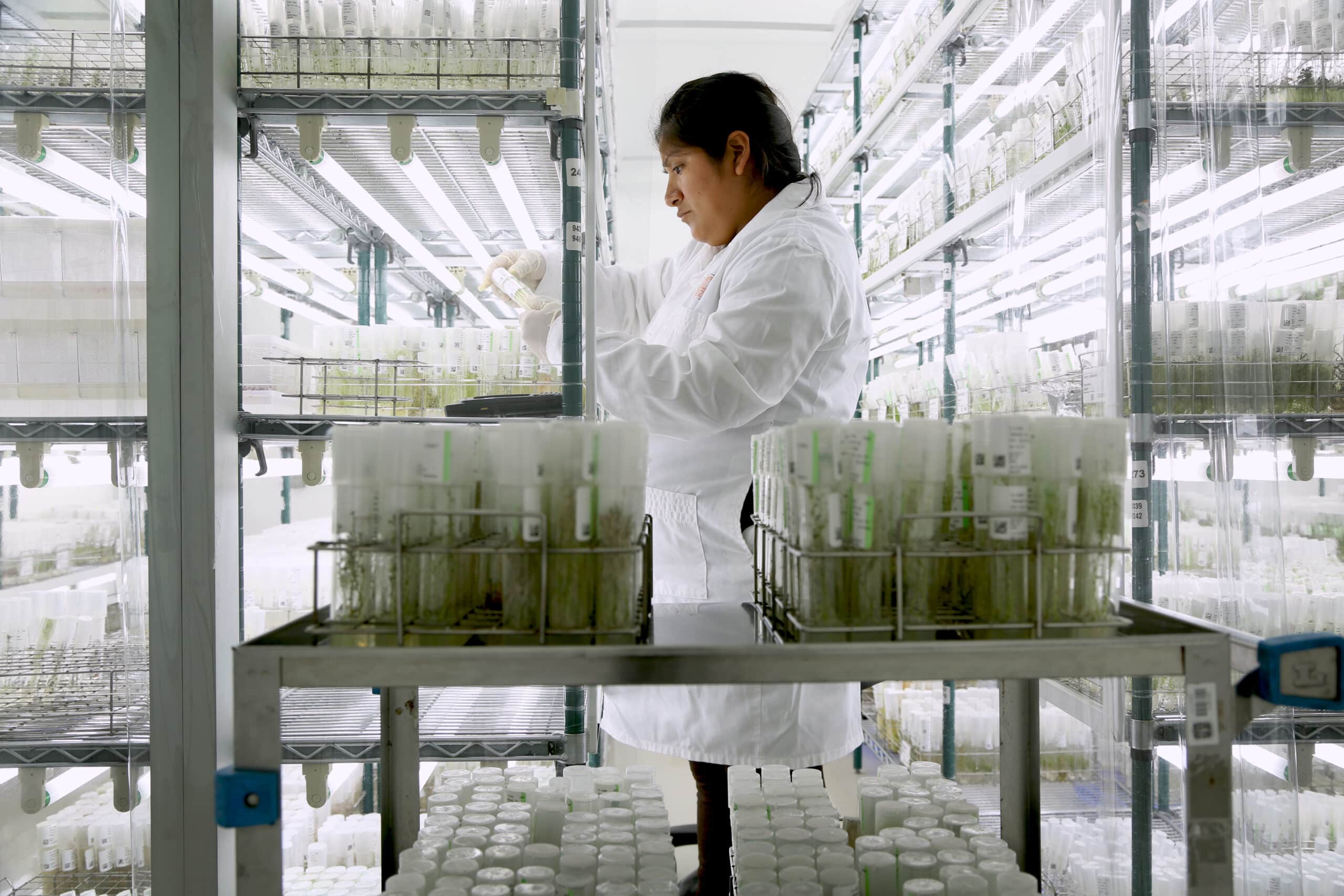The Canadian board chair of CIP is working to bring the local potato industry together with its global counterparts.
For Helen Hambly Odame, she’s always been interested in food security, which is what led her to spuds. In the 1980s, Hambly Odame took part in a volunteer program in the Andes Mountains of Peru.

“I’m volunteering in the Andes of Peru, seeing a culture in the environment where potatoes are life — it’s that simple,” Hambly Odame explains in Zoom interview. “That was a bit life changing. I came back to my farm here in Ontario and decided to go to university and study global food security issues.”
For years she worked on other aspects of agriculture, including as a professor at the University of Guelph, researching global food security and running a project on Canadian rural broadband. However, last year she saw herself drawn back to the world of food security and potatoes when the opportunity came up for her to be chair of the board of directors of the International Potato Center (CIP).
“Prior to being elected the chair of CIP, I was chairing the CGIAR research program on roots and tubers and bananas, which was a really successful research program that also connected scientific research and innovations across crops. So not just with potato and sweet potato, but into cassava and other tubers. And even banana and plantain which are important staple crops in some developing countries,” she says.
CIP was found in 1971 as a research-for-development organization based in Lima, Peru focusing on potato, sweet potato and Andean roots and tubers, the CIP website says. The research organization’s goal is to provide science-based solutions to enhance access to affordable nutritious food, foster inclusive sustainable business and employment growth, and support climate resilience of root and tuber agri-food systems. CIP has a research presence in more than 20 countries in Africa, Asia, and Latin America. The website also notes CIP is a CGIAR research centre, which is a global research partnership for a food-secure future.

For Hambly Odame, she sees a lot of opportunities for the Canadian potato industry to work with CIP. One of the research programs she thinks could be of interest to Canadians is the CIP’s work on biofortification of potato varieties. CIP has iron fortified white potatoes that they’re running field tests on currently.
“This is extremely important because of COVID 19. And if the pandemic told us anything, human immunity and immune response, micronutrients and nutrients, like iron are extremely important. Potatoes are rich in zinc and vitamin A, and these are really important for nutritional gains in populations like women and children in lower income countries. But also here in Canada because people are transitioning into more plant-based diets, and we’re really more mindful of the health benefits of potato,” she explains.
According to Simon Heck, director general of CIP, these biofortified potatoes are important to consumers in countries who have micronutrient deficiencies, such as parts of Africa, Asia and Latin America. He added people in North American and European countries are becoming increasingly interested in getting more nutrients through the regular foods they consume.
“What we have today in terms of the first generation of biofortified potato have been bred for the agri-ecologies in Peru, in India, and in parts of Africa. So, to apply the same methodologies to the varieties that are suitable in Canada, for example, would take yet another effort. But the principles of biofortification, how you get this enrichment of micronutrients, that’s what we have established,” he says in a Microsoft Teams interview.
Hambly Odame adds there’s a lot that Canadian growers can learn about agronomy from the work CIP is doing. For example, in countries such as Bangladesh, Pakistan, and India, grains are intercropped with potatoes. These regions are suspectable to flooding, but by doing intercropping it has proved potato to be a resilient crop that can survive extreme weather disasters.

“The nature of the organism itself as a plant is sequestering carbon from the air, so it’s a very carbon friendly crop, using that to generate a tuber, which becomes a food source,” Hambly Odame says. “There is huge potential there to also contribute to carbon sequestration, as well as sort of mitigate environmental or other disasters.”
It’s not just research work that could be of help to Canadian growers, but also those doing the research. Hambly Odame points out CIP has a longstanding history and relationships with many potato breeders in Canada. Lots of potato breeders and researchers have worked at the CIP potato gene bank in Lima doing training or have worked in other parts of the world with CIP.
According to Heck, CIP has established research relationships with universities across Canada, including the University of Guelph and Simon Fraser University. These research projects focus on areas such as agronomic research and extension research to help improve transfer of knowledge, skills, services, and technologies to farmers.
Heck recently started his role as director general of CIP and he’s keen to pursue new opportunities for the organization. He sees opportunities for CIP to work more with producer organizations in North America and Europe, and would like to connect grower organizations with their counterparts in Latin America, Africa and Asia to work together on sharing experiences and capacity development.
“We always think that we can learn a lot from their innovations, how are they dealing with issues that are also important to our farmers in Africa, Asia, or Latin America, such as pests and diseases, such as market issues, such as climate change,” he explains. Adding that this has happened and been successful in other non-potato sectors.
Header photo — Investigative assistant, Mariela Yupa, works in the potato section of the International Potato Center gene bank. Photo: International Potato Center
Related Articles
The World Potato Congress…. More Than Just a Congress
First International Potato Day Announced for 2024
Peter VanderZaag is Bringing Canadian Bred Spuds to the World









